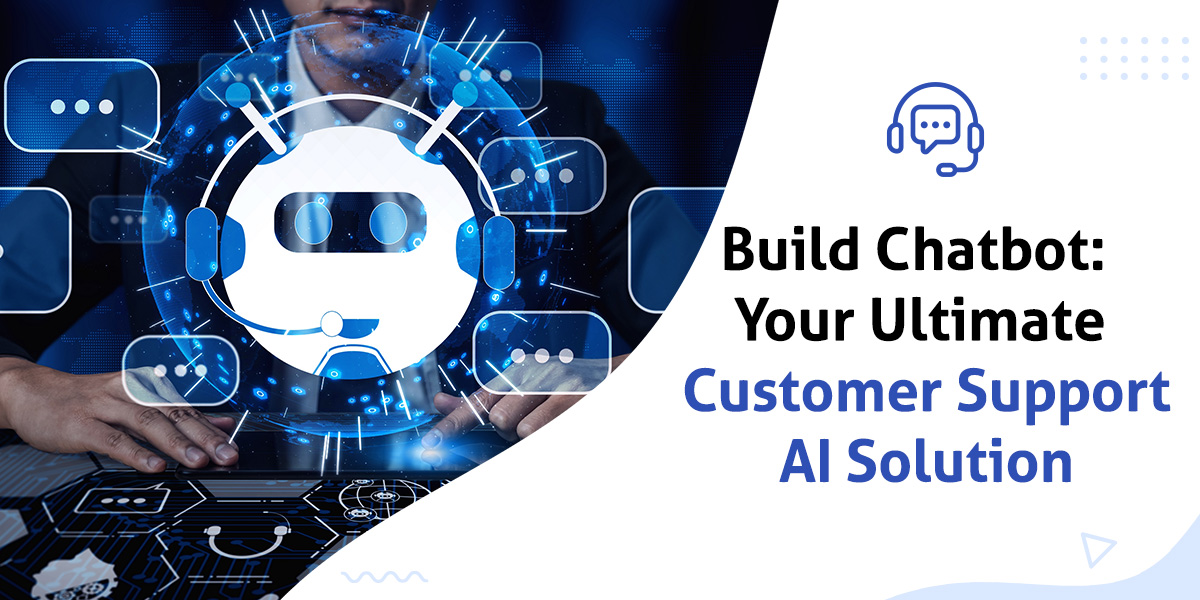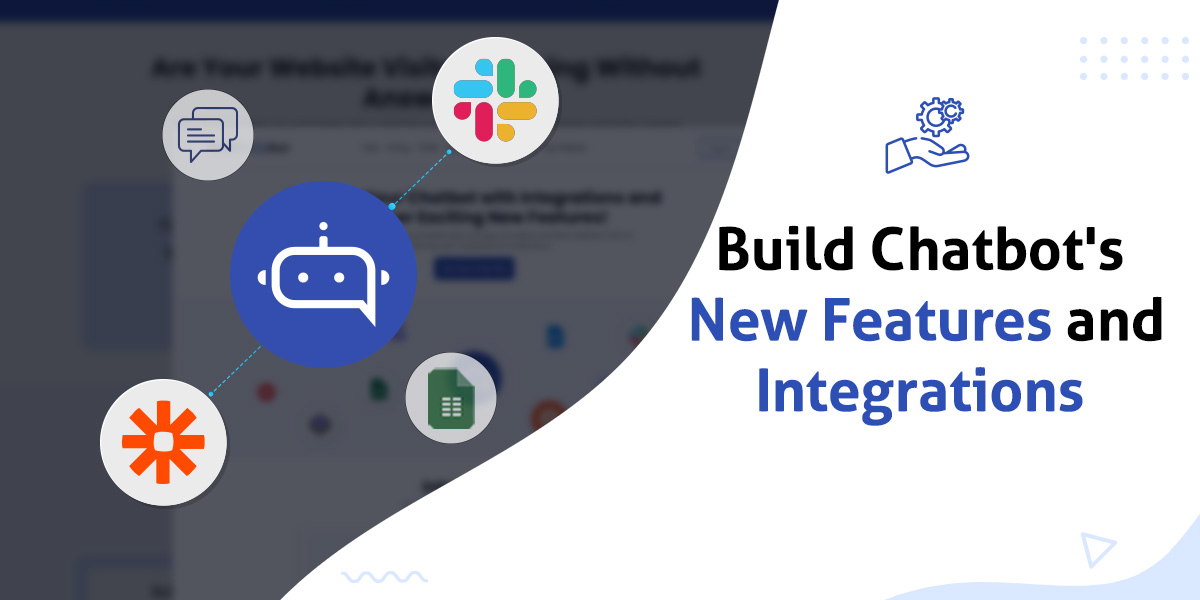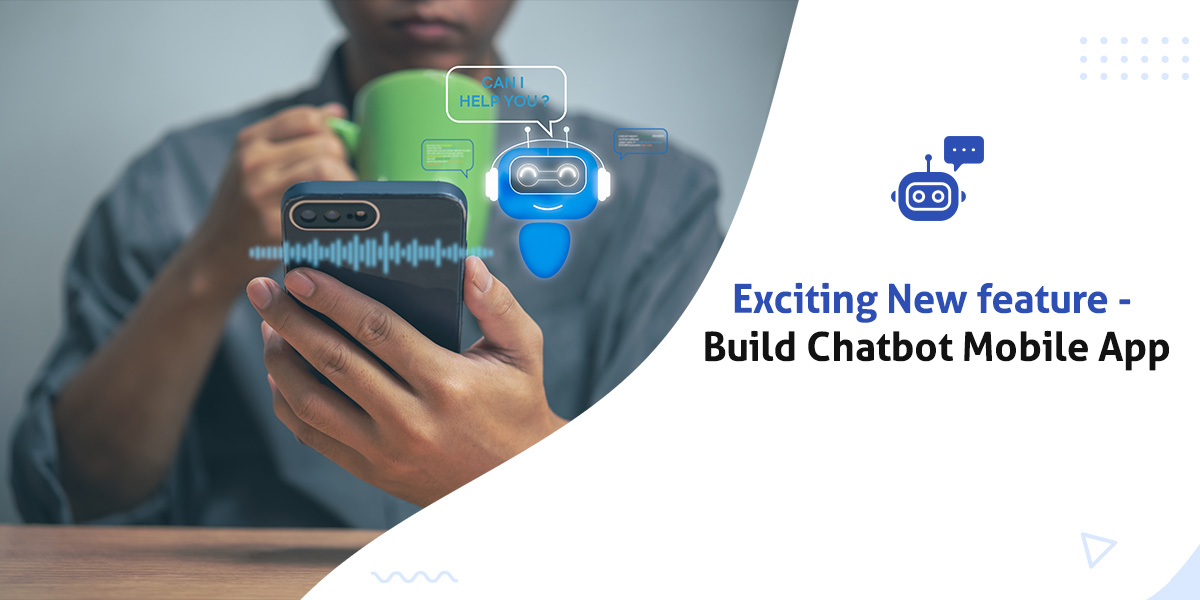- Customer Support
Build Chatbot: Your Ultimate Customer Support AI Solution

What Can a Customer Service AI Chatbot Accomplish?
A customer service AI chatbot is a software application designed to simulate human communication. As its name suggests, it's a bot (robot), and its capabilities depend on how it's programmed and designed. It can engage in conversations with you, address your inquiries, guide you through various tasks, or perform other tasks.
AI-powered chatbots often employ Natural Language Processing (NLP) to understand and respond to natural language. Consequently, users can engage in real-language conversations with the chatbot and receive natural responses in return.
Although there are many uses for chatbots, service operations are their most common use. In this blog post itself, we have provided a summary of the many uses that chatbots have across numerous sectors. You may scroll down to see it if you're feeling very eager.
Chatbots for Support and Customer Service Services: Different Types
There are primarily two kinds of chatbots used for customer support:1. Chatbots with rules:

A collection of established rules are used by rule-based chatbots to produce replies to user enquiries. Rule-based chatbots can be useful for giving quick replies to frequent questions but are restricted in their capacity to address complicated enquiries. User journeys and conversation flows are predefined in rule-based chatbots. For instance, you would need to compile an inventory of the most frequent user questions before include it in the chatbot if you wanted to use it to respond to typical user inquiries. Only the questions you have chosen and built into the conversational assistant will ultimately be able to receive responses from the chatbot. The optimum combination for rule-based chatbots is actual human agents. The vast majority of ordinary or L1 requests are handled by the chatbot, and only the difficult or L2 queries are forwarded to human agents.
2. Chatbots with AI:

Machine learning algorithms are used by chatbots powered by AI to comprehend natural language and provide replies. AI-powered chatbots can answer more complicated questions and are more flexible than rule-based chatbots.
They don't require a set of standard questions or conversational patterns. Large data sets may be used to create knowledge bases, which they can then consult to answer even sophisticated user inquiries.
Chatbots for Support and Customer Service Services: Advantages
- Utilising chatbots for customer support services has a number of advantages, such as:
- 24/7 accessibility: Chatbots are able to assist consumers whenever they want, even beyond regular office hours.
- Saving time: Chatbots may respond to several enquiries at once, which cuts down on the requirement for human interaction.
- Consistency: Chatbots may respond to frequent questions in a consistent manner, ensuring that consumers get accurate and trustworthy information.
- Personalization: Depending on the history and preferences of the user, chatbots may be designed to offer customised replies.
- Cost savings: By lowering the requirement for human support workers, chatbots may help organisations save money.
- Increased scalability: Chatbots are a great option for organisations that receive a lot of support requests since they can manage a lot of client enquiries at once.
- Chatbots may handle many languages, which makes them the perfect choice for companies with a worldwide clientele.
- Data gathering: Chatbots may gather useful information about client interactions and questions, offering information that can help organisations enhance their customer service and support systems.
- Decreased customer waiting times: Chatbots can respond to consumer questions right away, eliminating the need of clients to wait for human customer service representatives.
- Improved customer satisfaction is a result of chatbots' ability to offer dependable, accurate, and consistent answers to consumer questions.
How to build a customer service chatbot
Rule-based chatbots and AI-powered chatbots are the two types of chatbots, as was described in the preceding section. Companies choose the type of chatbot to use when providing any chatbots as a service based on the requirements of the customer. Nevertheless, we will look at how each of these chatbot kinds are made.
Let's start with the simpler method followed by chatbots that use rules for customer service. Different chatbot firms provide various builders and dashboards. I'll demonstrate the TARS builder's chatbot building process for you. After following this article, you ought to be able to create your own rule-based chatbots.
Making a Chatbot using AI for Customer Support
Users of chatbots powered by AI won't adhere to any pre-established processes. Users will be able to speak spontaneously and in their native tongue with the chatbot. As a result, developing AI-powered chatbots differs greatly from developing rule-based ones.
The degree of customer support provided by AI chatbots is higher than that of rule-based ones. That does not necessarily mean that it is the best option, though. To find out which one would make the best choice for your company's needs, speak with experts or arrange a free demonstration with our knowledgeable staff.
Utilising Customer Support Effective Use of a Chatbot for Business Goals Businesses can use the following advice to achieve success:- Prior to using chatbots, organisations should establish clear objectives for what they aim to accomplish. This can aid in directing the creation process and guarantee that the bot is successful in achieving organisational goals.
- Choose the appropriate chatbot type: Companies should carefully assess whether an AI-powered or rule-based chatbot is the greatest fit for their requirements. The intricacy of consumer enquiries and the amount of customisation needed are two factors to take into account.
- Invest in high-quality data since chatbots need it to respond to client queries truthfully. For the chatbot to work at its best, businesses need to invest in managing data and data quality verification.
- Integrate with current systems: To promote smooth communication and prompt resolution of client concerns, chatbots should be linked with current customer service systems.
- Customers should be notified when speaking with a virtual assistant rather than a live customer service representative in order to provide transparent communication. Expectations may be created and ambiguity avoided with the use of clear communication.
- Monitor Performance: Consistently keep an eye on the chatbot's performance. Examine the number of users who finish discussions and the number who abandon them. Determine why consumers leave a discussion at particular points and improve that section for more conversions.
- Integrate across many platforms: There is no justification for integrating a chatbot exclusively on your website. Omnichannel chatbots can also be combined with text messaging and mobile apps. Utilise every available channel to communicate with your consumers and give them a more beneficial, easy support experience.
How to use a chatbot for customer care to grow customer support operations
Chatbots make it simple to grow customer support operations since they can deal with a lot of enquiries. If you want to grow your customer service with a chatbot, consider the following advice:
- Automate repetitive and routine client enquiries with the chatbot to free up human agents to address more complicated problems.
- Offer chatbot self-service alternatives so that clients may look up information and discover solutions on their own.
- In order to provide a seamless transition and continuation in customer service, allow the chatbot to easily transfer consumers to human representatives when necessary.
- Use bot analytics and data to pinpoint problem areas and streamline the customer support procedure.
- Enable the virtual assistant to handle several languages to serve a wider range of customers and extend the reach of customer care.
- Embed the virtual assistant with other platforms and systems to improve the efficiency of information exchange and customer care.
- Keep customers informed and minimise their need for further service by using the chatbot to send them proactive notifications and updates.
In conclusion, the world of customer support is evolving, and the future belongs to the best AI chatbots. In our blog, we've explored the incredible potential of these intelligent virtual assistants. As businesses strive to provide exceptional customer service, AI chatbots are becoming indispensable tools. By harnessing the power of AI, you can build chatbot solutions that redefine customer engagement, streamline operations, and enhance user experiences. So, if you're ready to embrace the future of customer support, start your journey to creating the best AI chatbot today with Build Chatbot.






